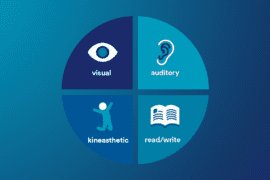If you’re a science geek or a student who is simply trying to get through school, you’ve probably heard about sublimation. This fascinating chemical process has marvelled scientists for ages. In this post, we’re going to share sublimation examples in everyday life, to illustrate the concept better.
You must have witnessed the process firsthand if you’ve left a piece of dry ice on the counter, only to find it disappear in a matter of minutes, cool huh?
Like dry ice, there are countless other sublimation examples in chemistry.
Table of Contents
What is Sublimation?
Assuming you’ve passed elementary since, you’re probably aware that when heated, solid melts into a liquid before changing into gas. However, sublimation is a chemical process that skips the liquid phase, causing solid to directly turn to gas. This typically occurs when the substance absorbs excess energy from its surrounding, skipping the liquid phase altogether.
Like any other chemical process, sublimation occurs more readily under certain weather conditions. This includes dry winds, low humidity and low temperature to name a few. Sublimation is likely to occur more frequently at higher altitudes with low air pressure.
Sublimation Examples in Real Life
To help you gain a better understanding of this process, here are some real-life examples of sublimation:
Dry Ice
As mentioned earlier, dry ice is one of the most popular examples of sublimation in real life. As the solid form of carbon dioxide, dry ice creates a smoky effect that is commonly used in ice cream parlors today. Because the substance is relatively safe to handle, it is often used for classroom demonstrations.
However, teachers are still advised to follow proper safety procedures to minimize the risks of accidents. Safety gear such as goggles, tongs and gloves must also be used.
While carbon dioxide is naturally present in the atmosphere, it can be harmful at certain concentration levels. This can restrict breathing, causing people to suffocate.
Adults can perform some great demonstrations at home to engage kids and help them learn about the process. For instance, submerging dry ice into water causes bubbles to pop up and create smoke.
The bubbles are created as a result of heat which causes dry ice to sublime.
Water
While it’s no surprise that ice turns to liquid upon heating, frozen water can also turn to air under specific conditions. Yes, you read that right. Though it’s difficult to observe the process, you’ll still be able to see the results.
The southern parts of Mount Everest serve as the best place to witness examples of sublimation in real life.
In short, the incredibly low temperature, dry winds, and intense sunlight create the perfect condition for snow to sublime.
The extreme temperatures in the United States sometimes cause snow to vaporize before it melts. So, if you’re lucky enough, you’ll be able to witness sublimation with your very own eyes.
Specialized Printers
Thought sublimation was only limited to the chemistry lab? Here’s where you’re wrong. Sublimation process also comes in handy for printing high-quality images. This is done via a dry-sublimation printer that uses a special film.
When heated, the pigments inside the film sublimate and are recaptured on paper. Once the pigment starts to cool, it turns back to solid, creating an image on the paper.
Because of the sublimation process, these printers are much more convenient and less messy to use as compared to ink printers.
Thus, specialized printers are among the most prominent examples of gas to solid conversion.
Moth Balls
Moth balls, similar to dry ice are also sublime in nature.
These crystals are made of a material known as Naphthalene that effectively chases moths away. To witness the process, conduct experiments in a laboratory setting by heating up materials to speed up the sublimation process.
However, we don’t recommend you to try this at home as high concentrations. Laboratories have proper ventilation that creates a safer environment for people to breathe.
Freeze Drying
Every wondered how frozen foods sublime, leaving behind ice crystals inside a bag?
This mainly occurs because frozen foods are freeze-dried to remove water to preserve perishable materials. While this process is conducted in factories, you can notice the results at home when stocking up on frozen goods.
In this process, goods are frozen after which pressure is reduced and heat is added. This causes frozen water in the products to sublimate.
Air Fresheners
When it comes to sublimation examples, we certainly cannot forget to mention air fresheners. Solid air fresheners (the ones typically used in restrooms) are known to be sublime in nature.
Teachers can demonstrate sublimation by heating up solid air freshener in a hot water bath. While doing so, observers will notice solid air fresheners directly turning to gas.
However, this experiment will need to be conducted inside a fume cupboard to prevent air from escaping.
Additionally, most air fresheners contain harmful chemicals so teachers should follow appropriate precautions to minimize the risks of accidents.
Hopefully, these examples have helped you grasp a better hold on the subject.
Image Souce: eBay






